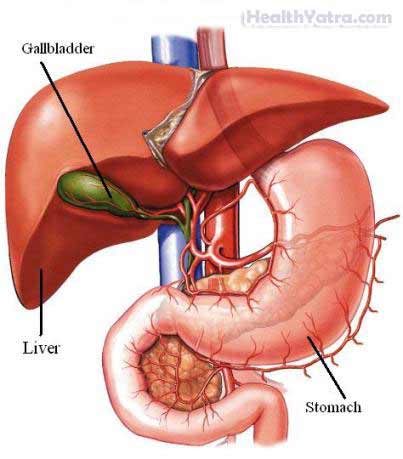Definition
Endoscopic retrograde cholangiopancreatography (ERCP) is used to treat and diagnose problems in the liver, gallbladder, bile ducts, and pancreas. ERCP uses a combination of endoscopy and x-rays. An endoscopy is the use of a special scope with a camera to view your throat, stomach, and upper intestine.

Reasons for Procedure
Your doctor may advise you to have an ERCP if you are suspected of having one of the following:
- Blockage of the bile duct
- Blockage of the pancreatic duct
- A leaky duct
- Irritation of the pancreas ( pancreatitis) or liver (hepatitis)
Possible Complications
Complications are rare, but no procedure is completely free of risk. If you are planning to have an ERCP, your doctor will review a list of possible complications, which may include:
- Damage to the esophagus, stomach, small intestine, or bile duct
- Pancreatitis (irritation of the pancreas)
- Infection
- Bleeding
Some factors that may increase the risk of complications include:
- History of problems with ERCP
- Bleeding disorders
- Abnormal anatomy
- Pregnancy
- Poor overall health
What to Expect
Prior to Procedure
- Do not eat for 8-12 hours before the procedure.
- If you have diabetes, discuss your medicines with your doctor.
- Arrange for transportation after the procedure. (You should not drive for 24 hours after the procedure.)
- Inform your doctor if you have had previous allergic reactions to contrast material.
Talk to your doctor about your medicines. You may be asked to stop taking some medicines up to one week before the procedure, like:
- Aspirin or other anti-inflammatory drugs
- Blood thinners, such as clopidogrel (Plavix) or warfarin (Coumadin)
Anesthesia
- Your throat may be sprayed with a medicine to make it numb.
- You will be given IV medicine to help you relax.
- If your doctor thinks your ERCP will take a long time, you may have general anesthesia. You will be asleep.
Description of the Procedure
You will lie on your stomach with your head turned to the right. A mouthpiece will be placed in your mouth to help keep it open. An assistant will be in the room to monitor your breathing and heart rate. Your doctor will put an endoscope into your mouth. The scope will be slowly passed through your throat into your esophagus, stomach, and/or small intestine. Air will be passed through the scope to open the airway to see better.
Your doctor will watch the images on a video monitor. The scope will be passed into the place where the ducts from the liver and pancreas open into the small intestine.
A tiny tube from the endoscope will then be passed into the opening of the bile and pancreatic ducts. Through this tube, your doctor will inject a contrast material. The contrast will make the ducts visible on the x-ray machine. If a gallstone shows up on the images, your doctor may attempt to remove it through the scope. Scarring or narrowing within the ducts can also be treated with instruments passed through the scope. Tissue samples may also be taken through the scope for biopsy. The sample will be sent to a lab for further testing.
How Long Will It Take?
Anywhere from 30 minutes to two hours.
Will It Hurt?
During the procedure, you may feel discomfort in your throat. After the procedure, your throat may be sore for a few days. In addition, you may feel bloated and need to belch.
Average Hospital Stay
If the ERCP is only diagnostic, you may go home the same day. However, if you have other procedures done through the scope, you may need to stay in the hospital overnight.
Postoperative Care
At the Care Center
You will be observed in a recovery area for at least one hour before you are sent home.
At Home
Be sure to follow your doctor’s instructions , which may include:
- Do not drive for at least 24 hours.
- Rest the remainder of the day.
- Resume your normal diet, unless told otherwise by your doctor.
- Do not drink alcohol for 24 hours after your procedure.
- If you were asked to stop taking certain medicines, ask your doctor when to resume taking them.
Call Your Doctor If Any of the Following Occurs
After arriving home, contact your doctor if any of the following occurs:
- Signs of infection, including fever and chills
- Nausea and/or vomiting or vomiting blood
- You develop severe abdominal pain
- You pass black, tar-like stools or have bloody stools
In case of an emergency, call for medical help right away.
